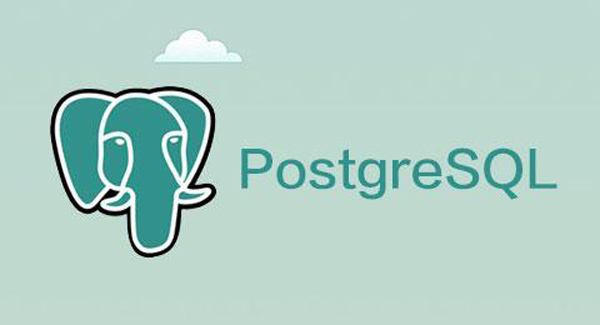
背景
身为一枚主要做后端的程序员,跟数据库打交道是必不可少的,虽然数据库由专门的dba进行负责,技多不压身。于是,把日常对postgresql数据库的日常操作比较频繁的进行记录下来,一是自己找的时候方便,另外也与大家做个分享交流。
命令介绍
除去写相关的sql工作,工作上用到比较多的就是数据库的备份与恢复、导表,今天先介绍一下数据库的备份与恢复。
pg_dump是一个用于备份的命令工具,即使当前数据库正在使用,也能够生成一致性的备份文件,生成sql文件或其他格式文件,且不会阻塞其他用户访问数据库(包括读、写),下面就详细介绍一下pg_dump。
pg_dump详解
执行pg_dump –help,英文内容如下:
1
2
3
4
5
6
7
8
9
10
11
12
13
14
15
16
17
18
19
20
21
22
23
24
25
26
27
28
29
30
31
32
33
34
35
36
37
38
39
40
41
42
43
44
45
46
47
48
49
50
51
52
53
54
55
56
57
58
59
60
61
62
63
64
65
66
67
68
69
70
71
72
73
74
75
76$ pg_dump --help
pg_dump dumps a database as a text file or to other formats.
Usage:
pg_dump [OPTION]... [DBNAME]
General options:
-f, --file=FILENAME output file or directory name
-F, --format=c|d|t|p output file format (custom, directory, tar,
plain text (default))
-j, --jobs=NUM use this many parallel jobs to dump
-v, --verbose verbose mode
-V, --version output version information, then exit
-Z, --compress=0-9 compression level for compressed formats
--lock-wait-timeout=TIMEOUT fail after waiting TIMEOUT for a table lock
--no-sync do not wait for changes to be written safely to disk
-?, --help show this help, then exit
Options controlling the output content:
-a, --data-only dump only the data, not the schema
-b, --blobs include large objects in dump
-B, --no-blobs exclude large objects in dump
-c, --clean clean (drop) database objects before recreating
-C, --create include commands to create database in dump
-E, --encoding=ENCODING dump the data in encoding ENCODING
-n, --schema=SCHEMA dump the named schema(s) only
-N, --exclude-schema=SCHEMA do NOT dump the named schema(s)
-o, --oids include OIDs in dump
-O, --no-owner skip restoration of object ownership in
plain-text format
-s, --schema-only dump only the schema, no data
-S, --superuser=NAME superuser user name to use in plain-text format
-t, --table=TABLE dump the named table(s) only
-T, --exclude-table=TABLE do NOT dump the named table(s)
-x, --no-privileges do not dump privileges (grant/revoke)
--binary-upgrade for use by upgrade utilities only
--column-inserts dump data as INSERT commands with column names
--disable-dollar-quoting disable dollar quoting, use SQL standard quoting
--disable-triggers disable triggers during data-only restore
--enable-row-security enable row security (dump only content user has
access to)
--exclude-table-data=TABLE do NOT dump data for the named table(s)
--if-exists use IF EXISTS when dropping objects
--inserts dump data as INSERT commands, rather than COPY
--load-via-partition-root load partitions via the root table
--no-comments do not dump comments
--no-publications do not dump publications
--no-security-labels do not dump security label assignments
--no-subscriptions do not dump subscriptions
--no-synchronized-snapshots do not use synchronized snapshots in parallel jobs
--no-tablespaces do not dump tablespace assignments
--no-unlogged-table-data do not dump unlogged table data
--quote-all-identifiers quote all identifiers, even if not key words
--section=SECTION dump named section (pre-data, data, or post-data)
--serializable-deferrable wait until the dump can run without anomalies
--snapshot=SNAPSHOT use given snapshot for the dump
--strict-names require table and/or schema include patterns to
match at least one entity each
--use-set-session-authorization
use SET SESSION AUTHORIZATION commands instead of
ALTER OWNER commands to set ownership
Connection options:
-d, --dbname=DBNAME database to dump
-h, --host=HOSTNAME database server host or socket directory
-p, --port=PORT database server port number
-U, --username=NAME connect as specified database user
-w, --no-password never prompt for password
-W, --password force password prompt (should happen automatically)
--role=ROLENAME do SET ROLE before dump
If no database name is supplied, then the PGDATABASE environment
variable value is used.
Report bugs to <pgsql-bugs@postgresql.org>.参数解析
这里介绍一下高频&&常用的参数说明,如果想深挖,建议查看官网进行查看,文章最后会给出官网链接。
-f
输出文件或目录名
-F && –format=c|d|t|p
输出文件格式 (定制、目录、tar)、明文 (默认值))
-j, –jobs=NUM
多任务并行
-Z, –compress=0-9
被压缩格式的压缩级别
-a, –data-only
只转储数据,不包括模式
-c, –clean
在重新创建之前,先删除数据库对象,默认这个参数是False,如果不进行删除,可以使用drop进行手动删除已存在的数据库
-C, –create
备份文件中有create database数据库的sql语句,默认是进行create
-E, –encoding=ENCODING
转储以ENCODING形式编码的数据,默认是数据库编码,不常用
-s, –schema-only
只备份数据库策略, 不包括数据
-t, –table=TABLE
只备份指定数据库指定名称的表
–inserts
以inserts命令,而不是copy命令的形式转储数据,pg_dump默认是copy模式
–column-inserts
以带有列名的INSERT命令形式转储数据
-T, –exclude-table=TABLE
备份的数据中将排除指定名称的表
–exclude-table-data=TABLE
不转储指定名称的表中的数据
–if-exists
当删除对象时使用IF EXISTS,这个会安全一点,但是时间会延长,不建议使用
联接选项
数据库连接参数是必填参数,参数与psql一致。
-d, –dbname=DBNAME
数据库
-h, –host=主机名
数据库服务器的主机名或IP
-p, –port=端口号
数据库的端口号,默认5432
-U, –username=名字
用户名
-w, –no-password
永远不提示输入口令
-W, –password
强制口令提示 (自动)
备份
登陆数据库服务器/远程连接的服务器,使用命令pg_dump,具体参数请查看上面相关详细介绍,下面列出几种常见的情景:
data + schema
导出整个指定的数据库。
pg_dump -h XXXX -p XXXX -U XXXX 数据库名称 > ~/数据库.sql
pg_dump -h XXXX -p XXXX -U XXXX -d XXXX -F t > /home/q/XXXX.tar
schema
导出整个指定数据库的策略。
pg_dump -h XXXX -p XXXX -U XXXX -s 数据库名称 > ~/数据库.sql
data
导出整个指定数据库的表数据。
pg_dump -h XXXX -p XXXX -U XXXX -a 数据库名称 > ~/数据库.sql
table
导出整个指定数据库的指定表。
pg_dump -h XXXX -p XXXX -U XXXX -t 表名 数据库名称 > ~/表.sql
exclude table
导出整个指定数据库的指定表,并排除掉指定的表。
pg_dump -h XXXX -p XXXX -U XXXX -T 数据库名称 > ~/数据库.sql
pg_dump -h XXXX -p XXXX -U XXXX –exclude-table-data 表名 数据库名称 > ~/数据库.sql
迁移数据
在这里介绍3种传输方式:
python -m SimpleHTTPServer 8888
scp
nc
命令的具体不做详细介绍。
恢复
切换用户
登陆到需要进行恢复的数据库服务器,切换postgres用户:
1
2sudo -i
su postgrespsql
执行psql,进行客户端。
新建数据库专属用户
create user 用户名 with password ‘密码’;
新建数据库
create database 数据库名 owner 用户名;
分配权限
grant all privileges on database 数据库 to 用户;
退出psql,执行:psql 数据库名 <数据库.sql
加访问权限,执行vim pg_hba.conf 加入:host 数据库 用户 all md5恢复
psql -U XXXX -d XXXX -f XXXX.sql
问题集
1 数据库无hstore数据类型
解决:
create extension hstore;
Select pg_terminate_backend(pid) from pg_stat_activity where datname = ‘数据库名称’
2 aborting because of server version mismatch
服务端 & 客户端 版本不一致导致。
解决:
方案一
降级服务端pg版本 <= 客户端
卸载old版本,更新新版本 >= 服务端版本
方案二
版本共存
1.sudo yumdownloader postgresql
2.yum install perl-ExtUtils-Embed
3.sudo yum install uuid
4.sudo yum install libxslt
5.rpm -ivh postgresql rpm包
6.在 /export 软连接/home/q/export下建一个目录 pg100_data ,用户和组都给 postgres
7./opt/pg10/bin/pg_ctl -D /export/pg100_data initdb
8.postgresql.conf 复制到 /export/pg100_data 目录中
9./opt/pg10/bin/pg_ctl -D /export/pg100_data start
学习参考
pg_dump官网:https://www.postgresql.org/docs/9.2/app-pgdump.html

